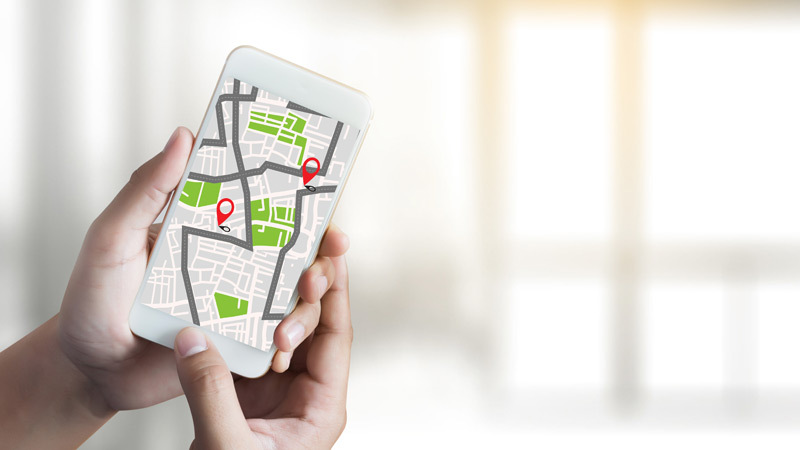Making Journeys Better: How Contactless Complements Daily Travel Apps

Our cities are becoming increasingly crowded, with UN predicting that two-thirds of the world’s population will be city-dwellers within the next 30 years[i]. Improving city life by reducing pollution and overcrowding while also moving people around efficiently is one of the biggest challenges of our time. That is why Visa is committed to helping public and private transport companies give their customers a faster, greener, more convenient way to use alternative, shared or public transportation.
People are changing the way they get around towns and cities, often using a mix of public, private and shared transportation – all in a single journey. What these every day journeys share in common is that we need to pay for them, whether it’s recharging our cars, paying to park, riding the underground, paying for tolls, or using a shared bike or scooter.
Moving from one mode of transport to another can be complicated, involving a variety of timetables and ticketing systems. Mobility-as-a-Service (MaaS) is the term used to describe the integration of various forms of transport services into a single mobility service accessible on demand. Mobile-based platforms integrate planning and, occasionally, ticketing for public and private transportation services. Experts predict that MaaS could be the key to linking various modes of travel, replacing the need for many residents in crowded cities to own cars, scooters and bikes while also helping create a more sustainable environment.[ii]
One of the early adopters, Transport for Greater Manchester (TfGM), announced in December completion of a pilot programme as part of the iMOVE Horizion 2020 project. The pilot set out to reduce congestion through a new app that provides instant access to trains, buses, Metrolink trams, car hire and car clubs[iii]. Soon, local residents with an Android or iOS device will be able to easily plan, book and pay for their journeys. This follows up on the successful implementation of contactless payments on Greater Manchester’s Metrolink network which has seen more than 1.6 million journeys made using the system since it launched in July 2019.
The role of Contactless in delivering MaaS
Around the world, people have embraced contactless (whether it’s using card, smart phone or watch) as their preferred way to pay, which is why, last year alone, more than 60 cities or locations adopted contactless payments at fare gates for buses, trains, trams, tolls, parking and other forms of transport. By eliminating billions of pre-purchased tickets, transport operators have given their customers a faster, easier, greener way to pay for the journey.
This convenient way to get around - “turn up, tap and travel”- goes hand in hand with mobility apps that can augment and enrich the customer experience by integrating journey planning and providing real-time notifications on journey progress and fare spend tracking. Already, contactless travel has proven to encourage adoption of public transportation by eliminating the need to queue up to purchase a ticket or top up a fare card. By augmenting this experience with a mobility app, city transportation systems can offer their riders the ability to plan their journey more dynamically as well as the flexibility to adapt and change it as needed.
For instance, we’ve all had the experience of turning up at a bus stop to find our service is delayed, right? The app might have notified us of this before we turned up and suggested an alternative route to your destination via, for example, a nearby shared bike or scooter. Perhaps soon we’ll be able to unlock a bike or scooter with a simple contactless tap, too, helping to boost ridership or these new forms or urban transport.
As with daily travel apps, contactless could also help public and private transportation operators create deeper engagement with customers who choose to register for personalised, value-added services such as loyalty or incentive programs, creating a more rewarding journey as well as an easier one.
The Future of Daily Travel
The exciting combination of contactless and a MaaS app gives customers a choice of faster, safer and more convenient way to get around busy cities. It also, has the potential to accelerate the adoption of more sustainable travel and increase the use of shared public and private transportation, while making it cost efficient for the operators. We are inching closer to future scenarios, such as the one above becoming the common way to get around. Visa’s dedicated team of urban mobility’s payment specialists have decades of experience working with governments, city planners, transport entities, financial and technology companies. They have already helped hundreds of cities, its citizens and visitors around the world to thrive. If you’d like to learn more about how Visa is helping improve local transport, click here.
Visa will be discussing the role of contactless technology and MaaS integration at Transport Ticketing Global 2020 in London. For more information, visit: https://www.transport-ticketing.com/
[i] 2018 World Urbanisation Prospects, United Nations: https://population.un.org/wup/
[ii] Deloitte, 2017, ‘The rise of mobility as a service’: https://www2.deloitte.com/content/dam/Deloitte/nl/Documents/consumer-business/deloitte-nl-cb-ths-rise-of-mobility-as-a-service.pdf
[iii] Fleet News, 2019, TfGM trials MaaS technology to encourage shared and active travel https://www.fleetnews.co.uk/smart-transport/news/tfgm-trials-maas-technology-to-change-travel-behaviour